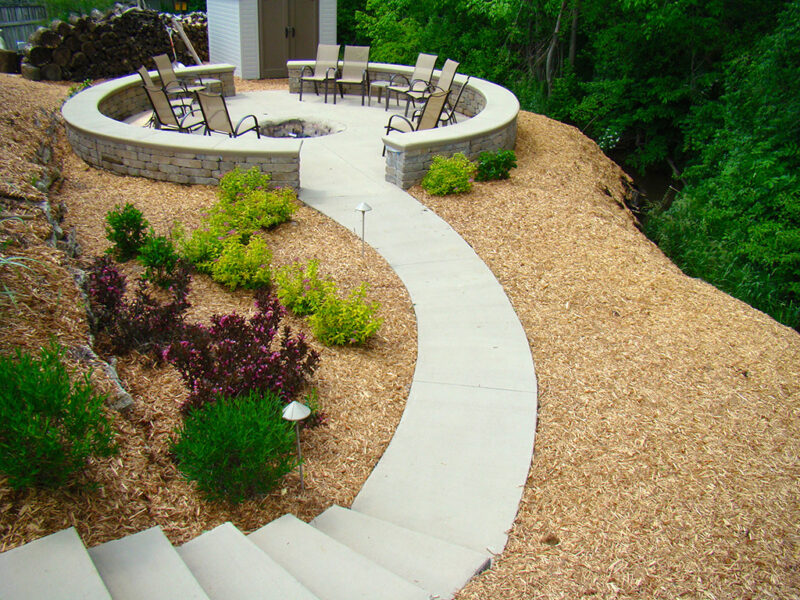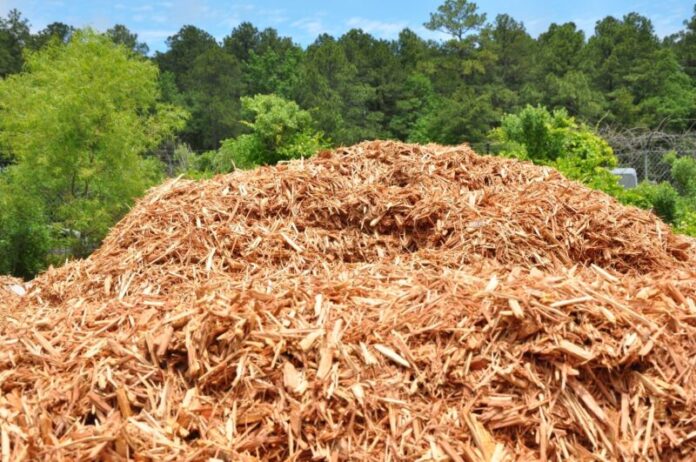Cedar mulch is a type of wood chips that are made from cedar trees. It is used as a soil amendment and as an insulator to help keep the temperature of your garden or landscaping area warmer in winter months.
Cedar Mulch is a type of mulch that can be used for landscaping purposes. It is made out of the inner bark of cedar trees.
When most gardeners are asked what the best garden and landscape mulch is, a large majority will say cedar mulch. It’s visually appealing, excellent for moisture retention, repels termites, suppresses weeds, and smells fantastic. Is it, however, a matter of style above substance, or does it live up to the hype? Here’s what you need to know so you can ask your landscaper the right questions.
What Is Cedar Mulch and Why Do I Need It?
Cedar is a conifer tree species that may be found in many areas of the globe, according to Seeds and Spades. Its wood has become a popular material in shingles, fences, furniture, ornamental handicrafts, and more because of its durability, beautiful color, and unique fragrance. When the cedar tree’s bark is peeled and then chipped or shredded, a mulch that may be utilized in gardening and landscaping is created.
What Characteristics Does Cedar Mulch Possess?
What distinguishes cedar mulch from other types of mulch? The chemical makeup of the substance. Cedar has two extraordinary chemicals:
Thujaplicin
Have you ever gotten a whiff of cedar and wondered why it smells so good? Thujaplicin is the solution, a chemical molecule that is not only pleasant to smell but also has antifungal, antibacterial, and antioxidant properties. If you can locate it, go for red cedar mulch; it’s typically a bit more costly, but it smells even nicer than regular mulch due to its higher amounts of Thujaplicin.
Plicatic Acid is a kind of licatic acid that is
Plicatic acid is a powerhouse when it comes to preventing rot, having even better anti-decay properties than Thujaplicin. On the negative, it’s also recognized as an allergy, so if you have allergies, avoid using cedar mulch.
What Are the Advantages of Using Cedar Mulch?
So, we’ve established what cedar mulch is. But why would you want to scatter it over your yard?
Retention of Moisture
Cedar mulch is popular among gardeners because of its moisture-retaining qualities. Cedar serves as a barrier between the soil and the elements, resulting in reduced evaporation, better soil temperature control, and protection against topsoil moisture loss, all of which help your plants flourish by preventing soil from drying up. Watering requirements are decreased, maintenance requirements are reduced, and your garden will begin to self-regulate with much less work on your part.
Controlling weeds
Cedar mulch, according to traditionalgardening.com, is excellent for keeping weeds out of your garden. It prevents weeds from reaching the surface and inhibits the sunlight required for germination by covering the soil. Your plants will flourish without having to compete for vital nutrients with unwanted weeds.
Repellent for Insects
Cedar mulch is one of the things that insects despise. Cedar generates natural oils with a pungent smell, which most people like, but which turns pests’ stomachs. A little amount of cedar mulch around the base of a plant or tree that insects love to eat should be enough to keep them away.
Insulation of the soil
If you reside in an area where temperature swings are common, cedar mulch may make a big impact in the health of your plants. It serves as an insulator, keeping it cold in the summer and warm in the winter, providing the sort of consistent, year-round climate that plants need.
Attractiveness
This advantage won’t necessarily help your plants grow faster, but it will make them look a lot better. A covering of cedar mulch may help you create a clean, consistent appearance in your yard. The brown, orange, or red color of cedar contrasts well with greenery, enhancing the attractiveness of your garden. It also smells nice, as if that wasn’t enough.
Maintenance
You’ll enjoy cedar mulch if you’re tired of how fast most wood mulches decompose. Unlike pine, hardwood, and cypress mulch, which lose their color and form fast and must be replenished every few years, cedar mulch maintains its appearance for much longer. It costs a little more than other alternatives, but the cost savings from not having to replace it as often gives it the edge.
What are the drawbacks of using Cedar Mulch?

As we’ve previously shown, cedar mulch has a lot of advantages. That isn’t to suggest it’s a silver bullet. With all of its benefits, there are a few drawbacks to be aware of. These are some of them:
Depletion of Nitrogen
According to Trees.com, as cedar mulch decomposes, it may pull nitrogen from the soil. This will not be an issue if the mulch is just in touch with the top layer of soil, since plants will still be able to take nitrogen from deeper in the soil, where their roots are. Mulch that has been combined with lower layers of soil, on the other hand, may inhibit plant development.
Imbalance in the soil
Fresh cedar may leak extremely tiny quantities of acid into the soil when used. If your soil is somewhat alkaline, it will likely have little effect and may even assist to enhance the overall pH balance. If your soil is already acidic, the cedar, on the other hand, may make it more more so.
Allergen Potential
The scent of cedar is unmistakable. Although most people find it appetizing, if you or a member of your family suffers from allergies, you may want to avoid it. People who have especially sensitive responses to scents may experience sneezing, coughing, watery eyes, and even skin irritations as a result of the intense perfume.
Killer of Bugs
Cedar mulch is an excellent method to keep insects and other creepy crawlies away from your plants. The only issue is that not all bugs are bad for plants. Some of them are even helpful. Ladybirds, hoverflies, butterflies, bees, and wasps are all beneficial insects to have around the garden, either because they eliminate pests like aphids or because they aid in pollination. Cedar, unfortunately, does not discriminate. It’s just as likely to repel nice folks as it is to repel evil ones.
What Is Cedar Mulch and How Do I Use It?
Cedar mulch is simple to lay down. Simply apply an equal layer of dirt over the top layer, about 3 inches deep. Cedar chippings, which are the heavier of the two types, are ideal for use around trees and big bushes. If you’re going to use it near bedding plants and flowers, go with shredded cedar instead. Make sure there’s a little space between the mulch and the base of trees and shrubs: if it’s too near, ventilation will be restricted, which can promote root and disease growth.
Cedar mulch is a type of wood chips that are used for landscaping. It is typically made from the cedar tree, but can also be made out of other types of trees or even some plants like bamboo. Cedar mulch repels insects and butterflies because it has oils in it that make them uncomfortable. Reference: does cedar mulch repel butterflies.





